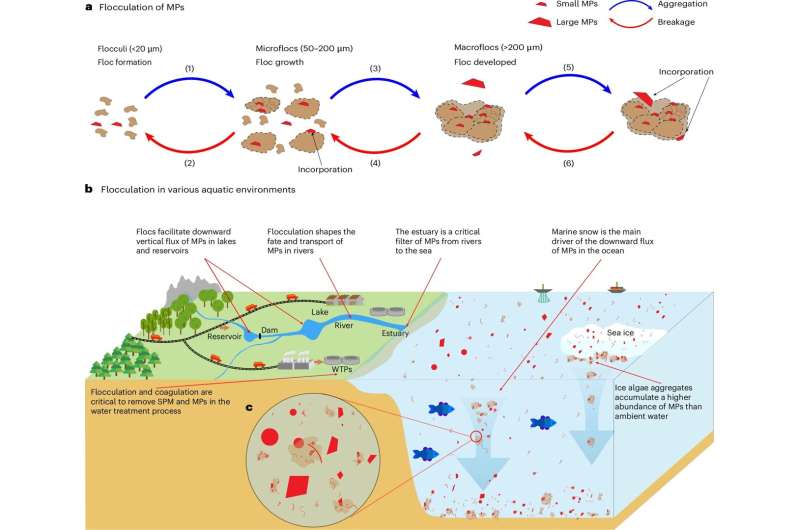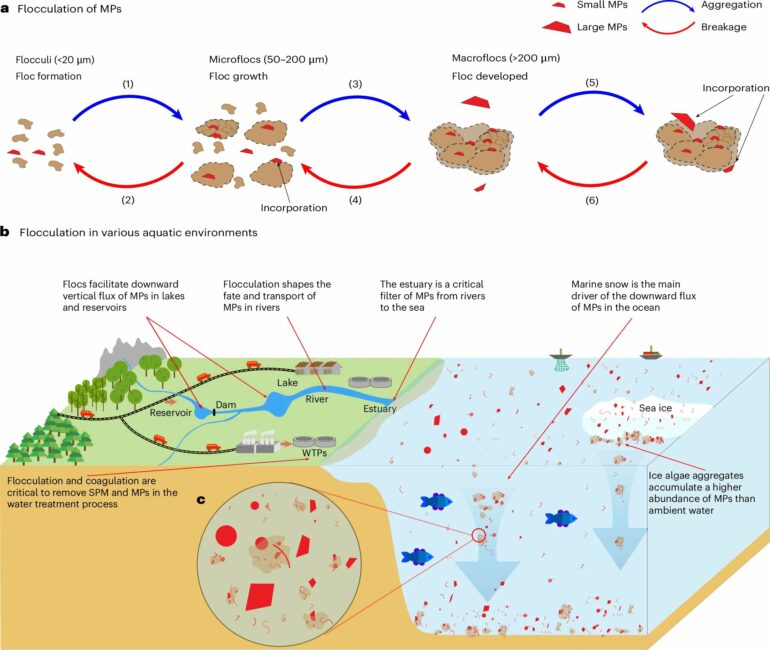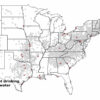Research sheds new light on the spread of microplastics, revealing a surprising “hitchhiking” mechanism that could impact ecosystems and human health.
In a surprising discovery, scientists have found that tiny microplastics are using natural particle clusters, known as flocs, to “hitch a ride” through rivers, lakes, and oceans. These clusters help microplastics move faster through water, enabling them to travel far from their source and accumulate on the ocean floor—potentially affecting marine life and even entering the food chain.
The study, conducted by researchers at Queen Mary University of London and published in Nature Water, reveals that microplastics in aquatic environments aren’t just drifting passively.
Instead, they attach to high-speed “floc trains” made of dense clusters of sediment, organic matter, and other particles that naturally form in water. Once aboard, these microplastics are carried across vast distances, reaching areas that might seem remote from human activity.
Microplastics and the high-speed ‘floc train’
Microplastics—tiny fragments of plastic pollution from sources like synthetic clothing fibers, single-use plastics, and degraded packaging—are a growing concern in marine environments. They’re found in every corner of the ocean, from surface waters to deep-sea sediments.
The Queen Mary research team has shown that microplastics latch onto flocs, which then act like natural carriers, allowing the microplastics to travel much faster than they would on their own. As a result, these tiny plastic particles can reach areas previously thought to be free from pollution. Once they sink and settle on the seabed, they risk affecting bottom-dwelling marine life and may even enter the food web, raising concerns for human health.
“Even the smallest plastic fragments can move over great distances and settle in unexpected places,” said Nan Wu, the study’s lead author and a Ph.D. student at Queen Mary University of London. “By understanding how microplastics travel in water, we’re one step closer to tackling the widespread issue of plastic pollution.”

Influence of flocculation on the fate and impact of MPs in various aquatic environments. © Nature Water (2024). DOI: 10.1038/s44221-024-00332-4
The ‘size ticket’ that determines movement
One of the study’s key findings is a “size ticket” rule that dictates which microplastics can attach to flocs. Through laboratory experiments and data analysis, the researchers discovered that only microplastics within a specific size range consistently attach to flocs, giving scientists a straightforward model to predict which particles are most likely to “board the train.”
This “size ticket” helps researchers forecast where microplastics might settle, providing a valuable tool for environmental scientists who aim to track pollution hotspots and manage water quality.
“It’s like needing the right-sized ticket to board the train,” explained Wu. This discovery adds a new layer to our understanding of how pollutants spread in aquatic environments and offers insights into better managing plastic pollution.
Environmental and health implications
Understanding microplastic movement in water systems is essential, not only for marine ecosystems but also for public health. As these particles accumulate in ocean floors, they risk being ingested by bottom-dwelling organisms. Over time, microplastics can enter the food chain, potentially impacting marine life and ultimately human consumers.
The findings emphasize the pervasive nature of plastic pollution and highlight the importance of tracking its movement through water systems. Everyday sources of microplastics—from plastic packaging to synthetic clothing—may seem small but play a role in a larger, ongoing journey through the planet’s waters.
A tool for future research and policy
This size-based model for microplastic movement could also help researchers study other pollutants that attach to flocs, enabling scientists to anticipate the spread and impact of contaminants in water environments more accurately. By better understanding how particles like microplastics travel, policymakers can implement more targeted measures to protect water quality and reduce pollution.
The next time you think about plastic waste, consider this: even the tiniest pieces are moving quickly through our waterways, thanks to their unexpected ride on the “floc train.” Understanding this journey is essential in addressing one of today’s most pressing environmental challenges.
More information:
Nan Wu et al, Flocs as vectors for microplastics in the aquatic environment, Nature Water (2024). DOI: 10.1038/s44221-024-00332-4
Provided by
Queen Mary, University of London
Citation:
High-speed ‘floc trains’: Discovery reveals how tiny plastic ‘hitchhikers’ spread quickly through water systems (2024, November 13)



